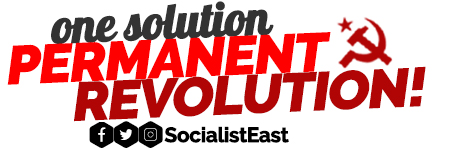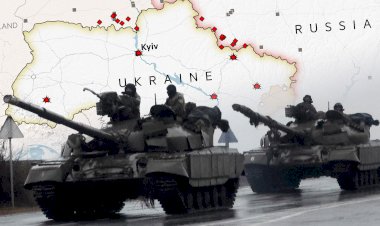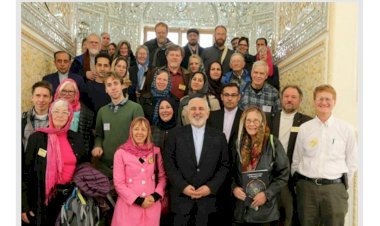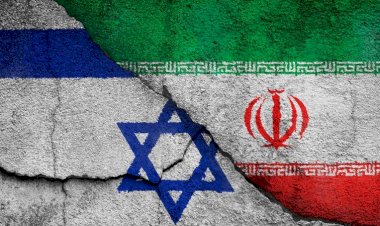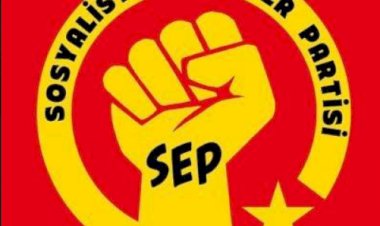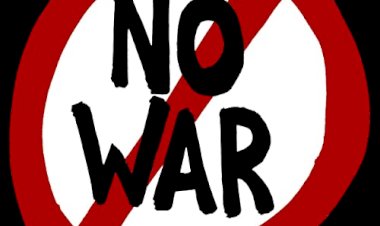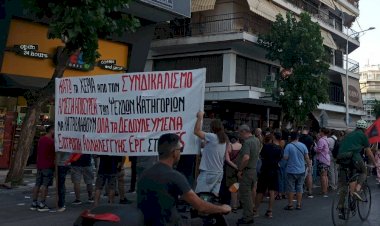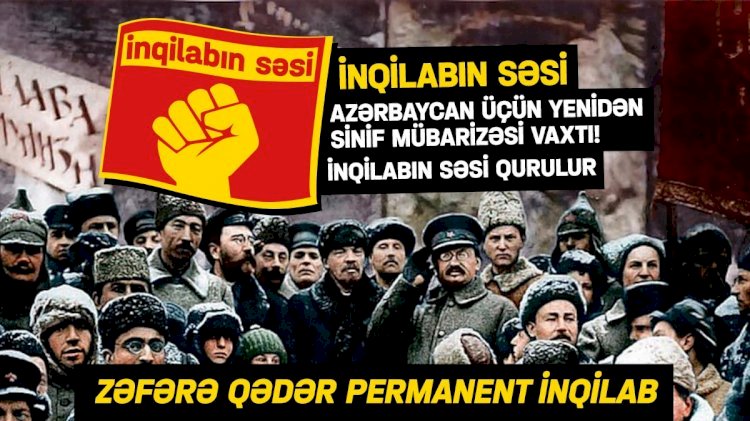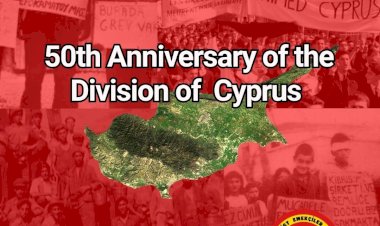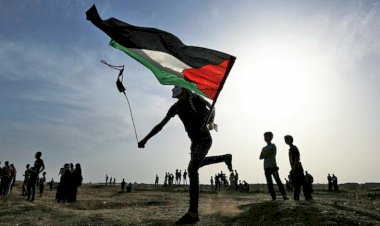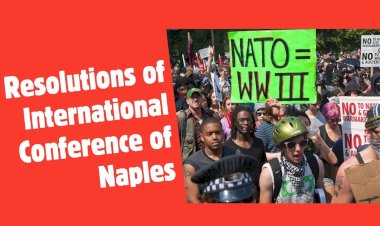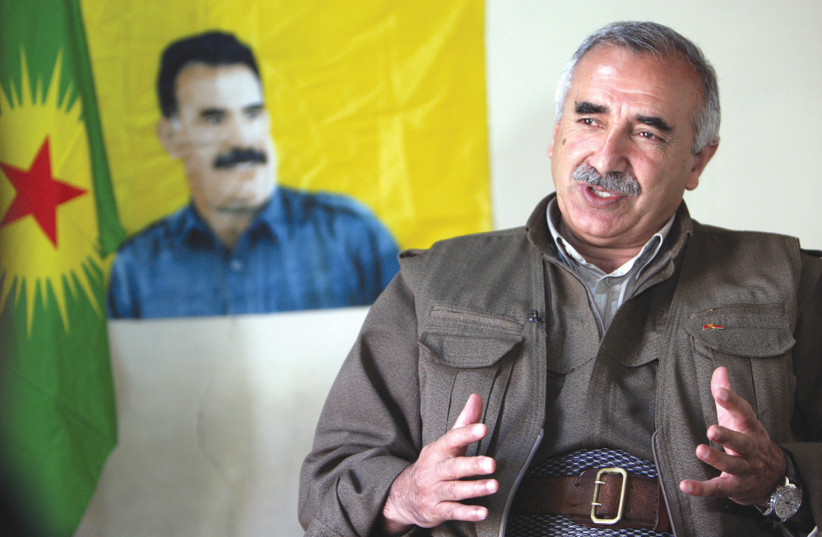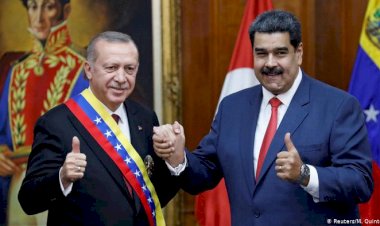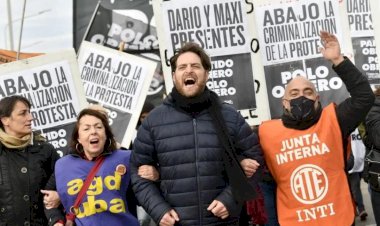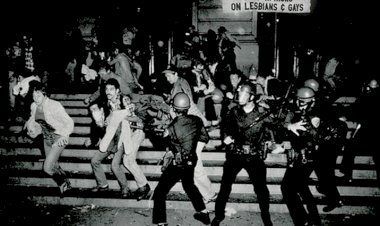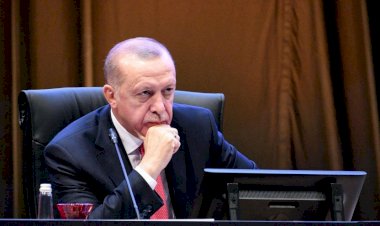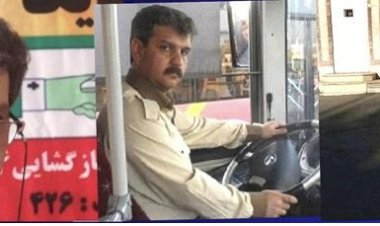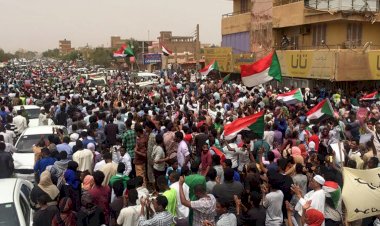A debate on Ukrainian War within ISL: How to Position in the Ukranian War? Some mistakes
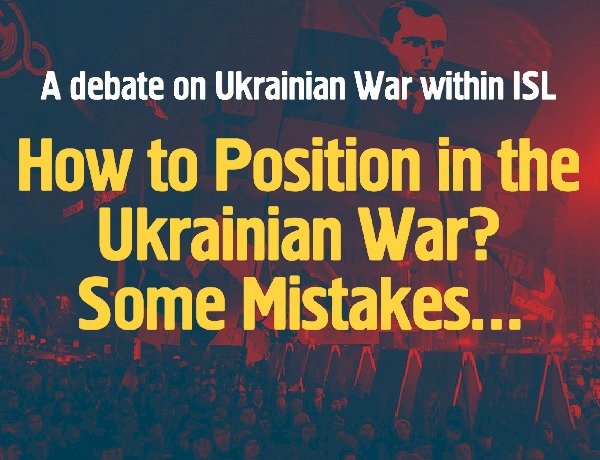
Today, once again the world is shaken by the horror of the imperialist war. Moreover, the contentious security balance between the Great Powers, on which the world imperialist system stands, is deteriorated. The situation is so fragile that imperialist wars are likely to spread and turn into a nuclear Armageddon. The the system’s return to the old balance and the “normalization” does not seem possible anymore. As such, revolutionaries should clarify their policies on the imperialist war.
For this, first of all, it is necessary to understand the dual character of the war in Ukraine. On the one hand, Russia, an imperialist force, occupies the territory of a sovereign state; on the other hand, there is a reckoning between imperialists in Ukraine. Therefore, it would be a great mistake to define the war in Ukraine unilaterally as a national war or the “National War of Independence of Ukraine”. It is very different from the US war against Iraq in 2003, for instance. Either, the fascist and imperialist Japan‘s invasion of colonial China, an example given by comrade Alejandro Bodart, cannot explain the situation in Ukraine today.[1] Why? To answer this question, we have to start with some facts.
- Neither Iraq nor the 1930s China were the superpowers of the world. But today, the US and the NATO Bloc as a whole support Ukraine in every aspect, except for joining the war, and consider this war as their own war. It is obvious that the situation of Ukraine, which is supported by the world’s most powerful imperialists, is not similar to Iraq or the 1930s colonial China. The attitude of the revolutionaries should be different.
- The US/NATO has been clashing with Russia for a long time for the dominance of Ukraine. To date, this conflict has been carried out with proxies. While the US used pro-Western oligarchs and Ukrainian nationalists as proxy, Russia used Putin -friendly oligarchs and separatists in the East and South Ukraine. The civil war exploded in 2014 was the result of the intensification of the conflict between the imperialist forces. Russia’s invasion of Ukraine is a continuation of this proxy war. In addition, the US and NATO intervene in the war in every sense, except leading their armies to the conflict. When we look at the history of Ukraine after the USSR, we can see how the Russian/US conflict breaks down Ukraine.
- The United States, which has made its own war through Ukraine and mobilized NATO in this direction, is still a global power at the top of the imperialist hierarchy. Russia, on the other hand, is a regional force in the 3rd category in the imperialist hierarchy. The Russian economy is far behind its imperialist rivals and it has seen in the Ukraine War that its military capacity was exaggerated. Therefore, minimizing the forces Ukraine which has the support of the superpower, while exaggerating Russia’s capacity will not contribute to a revolutionary analysis.
- In this context, it is obvious that comrade Alejandro Bodart’s claim that “Russia’s defeat cannot be seen as the victory of the United States” does not match reality. The United States and its partners see these wars as their own wars and are involved in the most effective way possible on the battlefield. Considering the fact that its leadership of the world imperialist hierarchy is under threat, the United States wants to teach a painful lesson to Russia and at the same time to intimidate China. Moreover, it is obvious that the historical aims of the United States for Russia are the disintegration of the country, drag it into ethnic and religious civil wars, and at least returning to its situation in the 1990s.
- Comrade Alejandro’s statement that “the revolutionaries need to work for the defeat of Russia in the war with all forces” would mean a dangerous approach to the NATO line. It is obvious that such propaganda will bring the working class closer to its imperialist bourgeoisie in the West. After all, it is the US/NATO, which sends decisive military/economic aid for the defeat of Russia. The pseudo socialists have already revealed themselves, preaching that NATO should send stronger weapons to Ukraine. On the other hand, such organizations cannot hide that they follow NATO bloc with several abstract anti-NATO rhetoric. In addition, there is no automatic relation between Russia’s defeat and emergence of a revolutionary situation in Russia. For the revolutionaries in Russia, the discourse of “Russia’s defeatism” is a revolutionary attitude, but the “defeat of Russia” policy in the West means collaborationism, because it means becoming partners with our own imperialist ruling class.
- US imperialism has been raising its global hegemony on the slogans of the “freedom of peoples” and “democracy”. Left-wing elements, which do not have a clear stance against this liberal fallacy, will naturally side with the West/USA. As a matter of fact, it is not a coincidence that those who buy this liberal discourse always find themselves on the side of the United States in almost every international crisis. Saying that “I think every day counts, and I think we have to respond as strongly and vigorously as we can”, Bernie Sanders acts as a typical Kautskyite politician. Communist Party (PCE) in Spain or the NPA/USFI with their classical opportunist line, are such political tendencies.
NATO As an Indirect Party of the War
In order to avoid a nuclear world war, NATO/USA does not directly participate in the Ukraine War with its own army. But they support Ukraine with all their might in all other fields except this one. Advanced weapons support, intelligence support, satellite and drone tracking support, military expertise and training support, direct financial support, political and diplomatic support, propaganda support and the heaviest possible sanctions on Russia… It should be noted that Russia’s reserves of 300 billion dollars were confiscated by the West. Apart from this, NATO forces are making a military build-up in eastern Europe, establishing new bases and announcing to increase the number of soldiers at the “high readiness level” to over 300.000.
Last May, the US Senate approved a $40 billion aid package (mostly weapons) to Ukraine. Thus, since the beginning of the occupation on February 24, the total amount of aid provided by the USA to Ukraine exceeded 50 billion dollars.[2] This amount is close to the total military expenditure of Russia in 2021. Apart from this, almost all NATO countries, including Turkey, provide military and economic aid to Ukraine. The value of the military aid sent by Poland to Ukraine alone is 1.7 billion dollars.[3]
As a matter of fact, the Ukrainian army dealt heavy blows to Russia with sophisticated weapons from NATO. In the first part of the war, Russia suffered a strategic defeat and had to leave Kyiv and its northern regions. Thus, Putin’s dreams of regime change in Kiev were dashed. Javelin anti-tank missiles, Stinger anti-aircraft missiles, powerful cannons, radars, unmanned aerial vehicles, Mi-17 helicopters and other munitions supplied to Ukraine made a significant difference on the field. Ukraine’s advanced missiles have dealt a major blow to Russia’s air superiority. Advanced US aid missiles sank the flagship of the Russian navy and managed to break the naval siege of the Odessa-Nikolaev region. Eventually, when the war devolved into artillery, NATO advanced long-range HIMARS missiles, along with a large number of artillery support, began to destroy Russia’s supply routes, back lines and ammunition depots. Advanced drone systems supplied to Ukraine also inflict heavy losses on Russia. It seems that as the war drags on, NATO will support Ukraine with even more powerful weapons. It goes without saying that the US and NATO see this war as their own.
Therefore, to claim that Russia’s defeat will not be a victory of the West is breaking with reality. In fact, this situation completely coincides with the political economy and history of the war. It is also a fact that the USA has been trying to break Russia’s hegemony in eastern Europe and the former USSR countries. It is not a new phase. As a matter of fact, NATO’s bombing of Yugoslavia on the grounds of Kosovo in 1999 was another war in line with this historical goal of US imperialism. Slogans such as “democracy” and “freedom of the peoples” are emptied and exploited by the USA. Now engaging in such multidimensional war with a unilateral Ukrainian national perspective with these same arguments would be a great danger.
Oppressed Nations and Ukrainian Nationalism
The presence of a certain sympathy for Ukrainian nationalism is clearly perceived in Comrade Alejandro’s article.
But there are obvious problems:
- Ukrainian nationalism has historically been far-right and fiercely anti-communist. The fact that Stalinism was responsible for this in history does not change the reality today. Currently, there is not even a significant social democratic party in Ukraine. The regime in Kiev has been aggressively oppressing all opposition elements since 2014. Therefore, while opposing the invasion of Russia and defending the right of peoples to self-determination in Ukraine, one should never side with the current regime in Kiev or with Ukrainian nationalism.
- In the article of Comrade Alejandro, it is stated that the Ukrainian Nazis never received more than 2% of the vote in the elections. However, the reality is much different. The fascist Svoboda Party received 10.4% of the votes in the last free elections held in Ukraine (2012).[4] While the pro-Russian parties, which received half of the total votes in Ukraine, could not participate in the elections after 2014, other right-wing parties took over many rhetoric of the fascist Svoboda; ultra-patriotic, anti-Russian and anti-communist rhetoric became the general face of bourgeois politics. Since 2014, Ukrainian politics has been shaped by the right and the far right. Neo-Nazi paramilitary formations with their own uniforms and symbols are incorporated into the Ukrainian police and army as autonomous units. There are reports on this issue by the BBC, which no one can blame as being pro-Putin.[5]
- Ukraine cannot be put in a similar political situation with Palestine, Western Sahara or the Kurdish people. Ukraine is a sovereign state with a population of 44 million, vast territory, a certain industrial and military capacity. More importantly, the current regime in Ukraine has the support of the world’s superpowers. Moreover, after the regime change in 2014, minorities in Ukraine are systematically oppressed, their rights are taken away and their political representatives are banned.
- We have to oppose the occupation of Russia. Our stance against foreign interventions in Ukraine, against both Russia and NATO, must be clear. But in doing so we must defend the right to self-determination of predominantly Russian-speaking eastern and southern Ukraine, including Crimea.
Oppressed nation movements tend to be shaped according to the character of the state they are in conflict with. In addition, the unique historical and cultural developments of the nations can also determine the political tendencies of these movements. For example, the Polish national movement in the 19th century had a progressive character. Polish nationalists in exile were an active component of the European left movement. Here it is necessary to mention Walery Antoni Wróblewski, the commander of the Paris Commune. But Polish nationalism gradually shifted to the right and the far right in the 20th century. As one of the greatest enemies of the new Soviet republic, the independent Polish state launched relentless attacks on the Red Army led by L.Trotsky. Subsequent Stalinist expansionism turned Polish nationalism into a form of fierce anti-communist reaction. Today, Polish nationalism preserves this reactionary character.
Ukrainian nationalism has also turned into a right-wing/extreme right-wing in its historical development. We do not say that far-right is the dominant trend, because even any form of left nationalism worthy of note does not exist in Ukraine. The Ukrainian nationalist movement, which had fiercely opposed to the October Revolution, turned into far-right forms as early as the 1920s. Founded in 1929, the OUN (Organization of Ukrainian Nationalists) was an openly fascist organization that emphasized ethnic purity. The crimes of Stalinism against the Ukrainians (and all oppressed peoples) in the 1930s not only spread Ukrainian nationalism, but also ensured that its main trend was the far-right. Under these circumstances, both wings of the OUN collaborated with the Nazis. When the OUN split in two, the OUN-B led by Stepan Bandera was clearly pro-Nazi, while the wing led by Melnyk (OUN-M) was pro-Mussolini. In this process, OUN committed genocide against Jews, Poles and Gypsies under the supervision of the Nazis, and terrorized Ukrainians who did not support them. It is incomprehensible not to mention these historical facts when describing the history of Ukrainian nationalism. Indeed, Ukrainian nationalism today is either right-wing or far-right and sharply anti-communist. Therefore, both the Ukrainian revolutionaries and the international socialist movement should be wary of Ukrainian nationalism. It would be a great mistake to praise Ukrainian nationalists as Ukrainian national liberation fighters.
To name this issue better, we can give two examples from Iran. When we examine the nationalism of the two oppressed nations in Iran, the Azeris and the Kurds, we see that the Kurdish national movement has historically been left-wing, just as it was in Ireland, Basque, Catalonia, Western Sahara, or Palestine over a long historical period (and partially still). Azerbaijani nationalism has historically had a right-wing and far-right character. Therefore, it is necessary to be careful against Azeri nationalist organizations when defending the right of self-determination of Azerbaijanis against the Mullah regime in Iran. No alliance can be formed between the revolutionaries and Azeri organizations, which are of extreme right character and are linked to fascist groups in Turkey.
Another example is the situation in Afghanistan. For many years, the Taliban organized a national war in Afghanistan against the world’s superpower, the USA. Undoubtedly, this war was a war that continued in much more unequal conditions than Ukraine. Now in this case, will Afghan revolutionaries be enlisted under the command of the Taliban army? Unfortunately, this is what is recommended to us in Ukraine. Of course, the sane revolutionaries had never even thought to take a stand with the Taliban against the US occupation. If the Afghan revolutionaries had been stronger, they would have created their own independent resistance organizations fighting the US and the Taliban. Unfortunately, these attempts became unsuccessful.
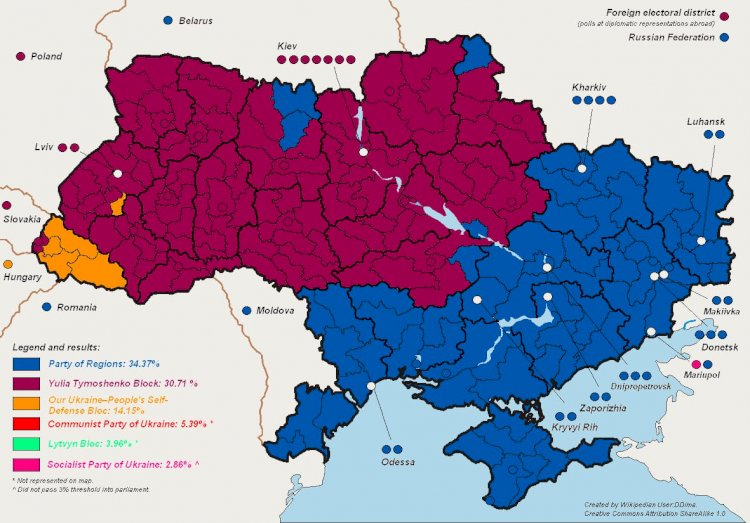
Classic election result map showing the historical and cultural division of Ukraine
Recent History of Ukraine
Ukraine finally became an independent state in 1991 with the dissolution of the USSR. Moreover, a large Ukraine was formed. On Lenin‘s initiative, the Donbas region was connected to Ukraine within the USSR. After World War II, large lands from Poland, Romania and Czechoslovakia were included in Ukraine. After Khrushchev gifted Crimea to Ukraine in 1954, a very large Ukrainian State emerged.
Gorbachev and Yeltsin, while hammering the final nail in the coffin of the USSR, had received assurances that NATO would not expand to the former Eastern Bloc countries in their negotiations with the USA. But the USA, of course, did not comply with these agreements. This would lead to endless tensions between Russia and the United States. Ukraine was the country where this tension was felt the most. Since the early 2000s, Ukraine has turned into an arena where Russia and the West are fighting for hegemony. The question that caused the wars was: “Will Ukraine follow Western imperialism or Russian imperialism?” In Ukraine, pro-Russian and pro-Western oligarchs and their representative political elites were fighting fiercely and had these imperial powers behind them. Moreover, the historical national and cultural differences in the social structure that divided Ukraine in half became a part of this struggle.
While the eastern and southern half of Ukraine, which had been part of Tsarist Russia for hundreds of years, spoke Russian and saw itself mostly close to Russia; the western half of Ukraine, on the contrary, was home to a sharply anti-Russian and anti-communist Ukrainian nationalism. While the Party of Regions (the party of the oligarchs affiliated with Russia) and the Communist Party of Ukraine, which is also close to Russia, received the majority of the votes in the East; the parties of pro-EU and NATO oligarchs received a clear majority in western Ukraine.
These contradictions would cause Ukraine to become the scene of major conflicts from 2004 onwards. The debate over who would replace Leonid Kucma, who tried to follow a kind of balanced policy between Russia and the West during his presidency between 1994-2004, ignited the conflict. When Yanukovych, the candidate of the pro-Russian Party of Regions, won the elections held in 2004 by a narrow margin, the pro-Western protests started which was also the start of the “Orange Revolution”. These demonstrations, which were heavily supported by the West with material means, in the geography of the former USSR, constituted the first link of the revolts, which will be referred to as “colored revolutions”. As a result, the elections were repeated and this time it was announced that the pro-Western Yushchenko won the election. Then the pro-Russian Party of Regions won the parliamentary elections held in 2006 again. Yanukovych, the candidate of the pro-Russian Party of Regions, won the 2010 presidential election.
In order to understand the social tension and polarization in the country during this period, the statues erected in different regions also give an idea. In 2007, a statue of the fascist Stepan Bandera was erected in western Lviv, while in 2010 a statue commemorating the victims of the OUN/UPA, led by Bandera, was erected in eastern Luhansk.
The Euromaidan As a Turning Point
After President Yanukovych did not sign the Ukraine-EU Association Agreement in 2013, quite violent protests broke out in Kiev. In the protests that lasted for weeks and were very bloody, extreme right-wing street forces seized the initiative. As a result, Yanukovych had to flee the country. As pro-EU-US forces celebrated their victory in Ukraine, they had already declared their revolution: “Euromaidan”.
In this process, the regime in Kiev was reorganized with a pro-Western, intensely Ukrainian nationalist and anti-Russian content. The new president Yushchenko gave the title of “Hero of Ukraine” to Stepan Bandera, who organized genocide against Poles, Jews and Gypsies by collaborating with the Nazis in World War II. It is also striking that Western imperialism promotes Yushchenko and politicians like him as heroes of democracy.
In this process, the far right gained a lot of strength both as a street force and as an official state line. The new administration in Kiev repealed the Law on Regional Languages, which allowed regions of Ukraine with large cultural minorities to use their own language in their local governments. Thus, the Russian language was banned in schools and public institutions. Far-right groups formed their own paramilitary groups and occupied important and sensitive positions. As a result, a difficult period began for the Russian minority and large Russian-speaking sectors in the country. This was also a time when the left opposition was intimidated with accusations of being pro-Russian.
As the regime changed hands in Kiev, anti-Maidan protests began in eastern and southern Ukraine. All the developments showed that Ukraine was dragged into civil war. Putin did not miss this opportunity and captured Crimea without firing a bullet. In Donbas, pro-Russian separatists seized the administration buildings. Anti-maidan protests were suppressed in many cities such as Odessa, Kharkov and Mariupol and clashes broke out for Donbas.
The Kyiv regime sent fascist battalions such as Azov, Aidar, Dnipro and Tornado, integrated with the official Ukrainian army, to seize the largely Russian-speaking areas. In Odessa, 48 anti-Maidan protesters, mostly from leftist groups, were burned to death by the fascists in a union building. Those who had to jump from the burning building were killed by lynching. The Kyiv regime has not taken any legal action regarding this massacre so far.
Important information about the Euromaidan process came to light after the phone conversations of the US Undersecretary of State for European and Eurasian Affairs Victoria Nuland with the US Ambassador to Kyiv Geoffrey Pyatt and the Estonian Minister of Foreign Affairs Urmas Paet were leaked to the press. In the phone call, which was not denied by the US authorities, it was said that the sniper fire that killed the demonstrators and policemen during the Euromaidan demonstrations in Kiev was opened by far-right forces.[6] Nuland, in his speech with the US ambassador to Kyiv, Pyatt, insists that Arseny Yatsenyuk, who is prone to far-right views and sharply anti-Russian, should be the new prime minister of Ukraine. She was angry that the ambassador suggested the more moderate-looking ex-ringman Klitscko, and meanwhile she was swearing at the EU, which also supports Klitscko.[7] As a matter of fact, what the USA wanted came true and Yatsenyuk became prime minister. The ruling partner was the fascist Svoboda Party.
After a historic turning point, Euromaidan, the USA took control of Ukraine, but Ukraine would not be able to maintain its integrity as a country again. The capitalist rulers of young Ukraine, which gained independence in 1991, failed to pursue an independent policy. Nothing more could be expected from oligarchs, men of the West or Russia. When this division of the ruling class coincided with the national/cultural divisions in the society, the parties of the civil war were also shaped. A revolutionary socialist party independent of oligarchs and imperialist centers would be the only hope to unite the Ukrainian workers. Unfortunately, such a power did not exist. On the contrary, the very strong Ukrainian nationalism played a catalyst role in the division of Ukraine and dragged into civil war under the US administration. When the tsarist wannabe Putin lost control of Ukraine to the USA, he activated the “Plan B” and seized Crimea and became a party to the civil war that broke out in Donbas. The new regime in Kiev would never accept the abandonment of Donbas and Crimea, the negotiations would be in vain and the civil war would continue with low intensity. With Kiev constantly strengthening its military and preparing for war, Putin wanted to get the United States’ commitment that Ukraine would not join NATO. When this request was rejected, Russia launched the invasion.
As the War Progresses, the Picture Becomes Clearer
When Putin pressed the button for an invasion of Ukraine on February 24, he hoped to easily seize Kiev and overthrow the government. It would soon become clear that this was a huge mistake. However, it was clear that Ukraine was not the Ukraine of 8 years ago. At that time, Russia had captured the Crimea without any conflict, and the separatists, who were Russia’s proxies, controlled a significant part of the eastern Donbas. During these 8 years, the Ukrainian state prepared for war with the support of NATO, kept its war power alive on the eastern fronts, achieved a certain national agreement through Ukrainian nationalism, and suppressed and intimidated those who did not comply. In short, it was clear that the Ukrainian state would not be collapsed by such a blow. But it is not uncommon in history for dictators who keep squats to tell them only what they want to hear, break away from reality and make big mistakes with overconfidence. Hence, the first part of Putin’s war to conquer Kiev and establish an administration dependent on him in Ukraine, resulted in the death of thousands of Russian soldiers and retreating in shame.
In the second part of the war, Russia intensified its attacks by leading all its forces to Donbass. Faced with Ukraine’s most warlike troops, the Russian army was able to advance from village to village, paying heavy prices. So far they have captured Luhansk and now the Donetsk campaign will begin. But from now on, it will not be less painful for Russia.
The United States and its partners want to turn the tide of war by supplying the Ukrainian military with increasingly effective weapons. The HIMARS missile system sent by the USA has enabled sensitive attacks on the Russian army’s supply routes and ammunition depots. The British army has already started to train 10,000 Ukrainian soldiers in the UK in order to fill the well-trained troop shortage of Ukraine.[8] NATO is trying with all its might to give the Ukrainian army a resistance and counter-attack capacity.
Russia is trying to win the war with intense human consumption, as it has many times in history. The loss of life for both sides is very high. Even in the worst case, Putin will not want to call for a ceasefire without gaining full control in Donetsk after Luhansk. The US, on the other hand, is very happy with NATO’s resurgence and its dominance over Europe. On the other hand, the fact that the USA/NATO took such an active role in the Ukraine War brought about a decrease in the support given to Ukraine in the leftist circles of the world.
An Internationalist Class Position
The revolutionary attitude in Russia is the position of “revolutionary defeatism”. In a situation where the atmosphere of nationalism is affecting Russia and intense state repression continues, revolutionaries in Russia should intensify revolutionary propaganda against Putin and his oligarchs, and look for opportunities for anti-occupation protests.
While the revolutionaries in the West oppose the invasion of Russia, they should also expose the expansionism of the NATO bloc and point out the provocative policies that the NATO bloc has followed from the past to the present as the culprit of the war. The creation of an nationalistic anti-Russian atmosphere by the ruling classes and bourgeois media in the West under the leadership of NATO must be fought against. It is necessary to fight for the development of an anti-war movement with a clear anti-imperialist content.
The position of the Ukrainian revolutionaries is revolutionary defense. It should be aimed to establish workers’ self-resistance organizations independent of the bourgeoisie, all kinds of reactionary elements and NATO forces. Unfortunately, it is a given situation that the forces of the Ukrainian revolutionaries are very limited. Therefore, revolutionaries against the invading Russian army and the extreme right-wing collaborator Kyiv regime should form organizational structures suitable for their own powers. The left is very weak in all former Eastern Bloc countries due to the heavy damage of the Stalinist past, the situation is even worse in Ukraine because the Kyiv regime has purged the left forces that were critical of it. On the other hand, in order to get rid of this weakness, the revolutionaries cannot follow Ukrainian nationalism and its leadership, the Kyiv regime.
Ukrainian revolutionaries should try to establish independent revolutionary defense organizations against the invading Russian army. The most advanced case is the revolutionaries establishing their own zones of armed control. Under the toughest conditions, revolutionaries must develop their own organized forces on the basis of an independent class attitude. In doing so, it should be kept in mind that the oligarchs in Kiev, the Zelensky government and other nationalist organizations are our class enemies.
It is of great importance to tell the masses, as widely as possible, how the pro-US and pro-Russian Ukrainian oligarchs made Ukraine a vassal of the imperialist powers, and to learn the lessons of the recent history of Ukraine. Today, opposition to the regime in Kiev is not allowed to operate legally. Therefore, even under illegal conditions, there must be ways to meet those sectors of the working class who do not sympathize with Putin and the nationalist bourgeois in Kiev. Being on the same front with the nationalists in Kiev means surrendering to anti-worker and far-right forces. While the revolutionaries fight against the Russian occupation, they will continue to defend Donbas’ right to self-determination.
STOP PUTIN’S INVASION OF UKRAINE!
NATO OUT! HANDS OFF UKRAINE!
AGAINST CHAUVINISM OF ALL KINDS!
ABOLISH NATO!
SELF-DETERMINATION RIGHT OF UKRAINE
SELF-DETERMINATION RIGHT OF DONBASS
FOR AN INDEPENDENT SOCIALIST UKRAINE!
References
- https://lis-isl.org/en/2022/07/02/un-aporte-sobre-la-guerra-y-los-debates-en-la-izquierda/
- https://www.reuters.com/world/us/after-delay-congress-sends-40-billion-ukraine-aid-package-biden-2022-05-19/
- https://researchbriefings.files.parliament.uk/documents/CBP-9477/CBP-9477.pdf
- https://en.wikipedia.org/wiki/2012_Ukrainian_parliamentary_election
- BBC Newsnight, Ukraine: On patrol with the far-right National Militia (https://www.youtube.com/watch?v=hE6b4ao8gAQ )
- BBC, February 2014, Ukraine crisis: Transcript of leaked Nuland-Pyatt call (https://www.bbc.com/news/world-europe-26079957)
- CNN, March 2014, Leaked call raises questions about who was behind sniper attacks in Ukraine (https://edition.cnn.com/2014/03/05/world/europe/ukraine-leaked-audio-recording/index.htm)
- The Guardian, July 2022, Ukrainian soldiers arrive in UK for training with British forces (https://www.theguardian.com/world/2022/jul/09/ukrainian-soldiers-arrive-uk-training-british-forces)
